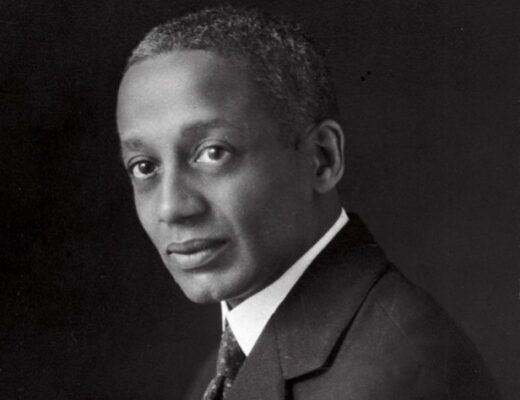“Where there is no vision, there is no hope.”
– George Washington Carver aka “Black Leonardo”
Agricultural scientist. Professor. Inventor. Pioneer.
What I really want you to know about George Washington Carver was that his career extends far beyond his peanut experiments.
Carver was born into slavery, struck with a life-threatening illness, kidnapped, orphaned and emancipated all before his first birthday.
In 1896, Booker T. Washington, the first principal and president of the Tuskegee Institute, invited Carver to head its Agriculture Department. Carver taught there for 47 years, developing the department into a strong research center and working with two additional college presidents during his tenure. He taught methods of crop rotation, introduced several alternative cash crops for farmers that would also improve the soil of areas heavily cultivated in cotton, initiated research into crop products (chemurgy), and taught generations of black students farming techniques for self-sufficiency.
In 1942, Carver arrived in Dearborn, Michigan at the invitation of Henry Ford, founder of Ford Motor Company. Like Carver, Ford was deeply interested in the regenerative properties of soil and the potential of alternative crops such as peanuts and soybeans to produce plastics, paint, fuel and other products. Ford had long believed that the world would eventually need a substitute for gasoline, and supported the production of ethanol (or grain alcohol) as an alternative fuel. In 1942, he would showcase a car with a lightweight plastic body made from soybeans. Ford and Carver began corresponding via letter in 1934, and their mutual admiration deepened after Carver made a visit to Michigan in 1937. As Douglas Brinkley writes in “Wheels for the World,” his history of Ford, the automaker donated generously to the Tuskegee Institute, helping finance Carver’s experiments, and Carver in turn spent a period of time helping to oversee crops at the Ford plantation in Ways, Georgia.
By the time World War II began, Ford had made repeated journeys to Tuskegee to convince Carver to come to Dearborn and help him develop a synthetic rubber to help compensate for wartime rubber shortages. Carver arrived on July 19, 1942, and set up a laboratory in an old water works building in Dearborn. He and Ford experimented with different crops, including sweet potatoes and dandelions, eventually devising a way to make the rubber substitute from goldenrod, a plant weed. Carver died in January 1943, Ford in April 1947, but the relationship between their two institutions continued to flourish: As recently as the late 1990s, Ford awarded grants of $4 million over two years to the George Washington Carver School at Tuskegee.
He is most widely know for his work with peanuts, but he also unleashed the potential uses of sweet potatoes and soybeans, and inspired a movement that has renewed importance today – developing agricultural alternatives to petroleum products.
He was the first nonpresident to have a monument established at his birthplace by the National Park Service.
Carver only patented three of his inventions. In his words, “It is not the style of clothes one wears, neither the kind of automobile one drives, nor the amount of money one has in the bank that counts. These mean nothing. It is simply service that measures success.”
George Washington Carver died on January 5, 1943, at the age of 78 after falling down the stairs at his home. He was buried next to Booker T. Washington on the Tuskegee grounds. Carver’s epitaph reads: “He could have added fortune to fame, but caring for neither, he found happiness and honor in being helpful to the world.”
Source: Wikipedia





No Comments